Outlook’s WebApp wont Download Attachments
Outlooks Web App usually stops downloading attachments due to browser compatibility issues, low bandwidth, conflicting cache/cookies/user data, restriction by security software, ISPs network restrictions, attachment’s extension not supported and other web-browser related problems.
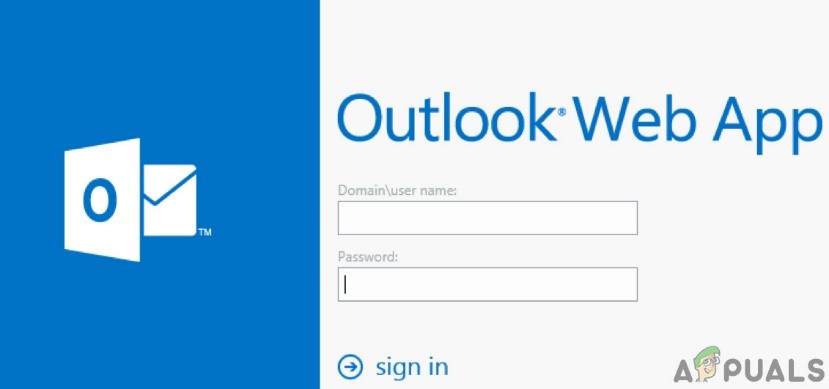
What Causes Outlook’s WebApp to stop downloading attachments?
- Browser Compatibility: If you are trying to download attachments with a browser that is not supported by Outlook Web App then you can face the current error.
- Low Bandwidth: If you are accessing Outlook Web App from a low bandwidth network connection then it can be the cause of the error at hand.
- Conflicting Cache/Cookies/User Data: Old cookies/cache/user data can break the functionality of the Outlook Web App and can cause the current error.
- Restriction By Security Software: Security Software like Anti-virus and Firewall has tendency to restrict network resources that “they think” as malicious and if due to any glitch, if these applications have detected Outlook Web App as malicious then restrictions created by these applications can cause Outlook Web App to throw the error we are facing now.
- ISPs Network Restrictions: ISPs apply techniques to keep things safe and under control and restrict certain network resources, and these imposed restrictions by ISPs may force the current problem.
- Blocked Attachment Extension: Outlook Web App by default blocks certain types of file extensions as attachments and if you are trying to download such a file as an attachment then Outlook Web App would not allow to download you that.
- Suspicious Sender: Outlook Web App uses filtration of Senders to mark out the Scammers and Malicious and if your sender is marked as suspicious by Outlook Web App then it can cause the error we are currently facing.
- Incompatible Brower’s Add-ons: Certain Add-ons are incompatible with Outlook Web App especially AdBlock is known for breaking Outlook Web App functionality and thus cause the current error.
- New User Interface: Microsoft frequently releases a new user interface to add more features, functionalities and to improve User experience of Outlook Web App, but sometimes, due to glitch in the coding, new User Interface can cause the current issue.
Before Starting the Troubleshooting
Before moving on with the troubleshooting, check if it is an OWA issue or issue is on the server-side. So, try to access the Outlook Web App from another system on another network and if the problem persists then it is most probably Outlook Web App bug, for which you should contact your IT Administrator or Microsoft. Also, logout and re-enter your Outlook password to re-login.
Fix the Outlook’s WebApp Attachment Downloading Issues using these solutions
1. Download All Attachments as Zip
Users have submitted a strange behaviour in Outlook Web App where sometimes a user could not download a single attachment but he can download all the attachments as a zip file by clicking on “Download All”. So, let us try if we can take advantage of this.
- Open Outlook Web App and open the email with the attachments.
- Now locate “Download All” and click on it.
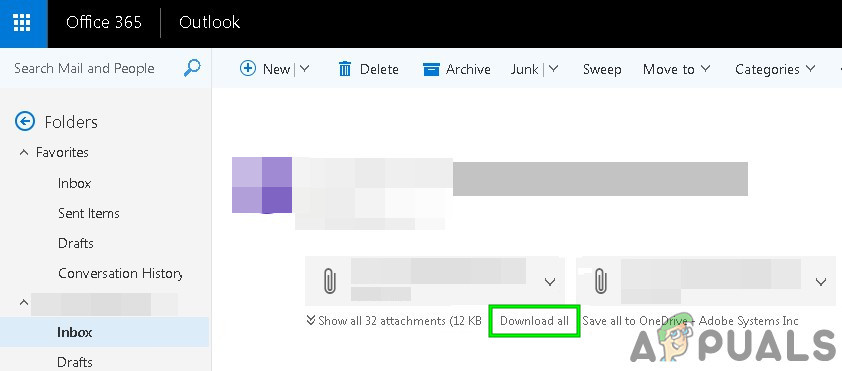
Click on Download All
Now check if you have succeeded in downloading the attachments.
2. Save the Attachments to OneDrive
The Outlook Web App lets you save attachments you’ve received in an email directly to your OneDrive for Business. In Outlook Web App, when you save files to OneDrive then these files are added to a folder called Email attachments in OneDrive for Business. If you cannot download attachments in Outlook Web App then “Save to OneDrive” may solve the problem.
- Open the message that has the attachments.
- To save a single attachment, click on the drop-down menu located beside the attachment and then click on Save to OneDrive.

Click Save to OneDrive in the drop-down menu - And if you want to add all the Email attachments then click on Save all to OneDrive.
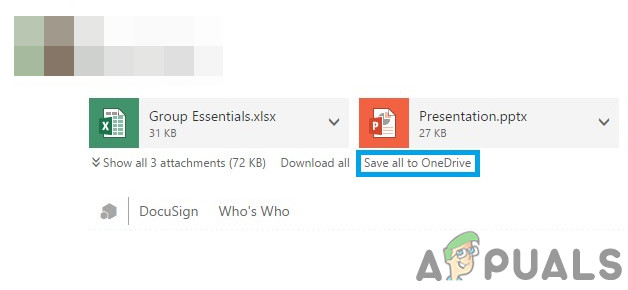
Save all to OneDrive - Once a file is added to OneDrive for Business you should see the confirmation on the attachment.

Confirmation on the Attachment
3. Revert to the Old Outlook Web App User Interface
Microsoft is continuously trying to add more features, and functionalities to improve the User experience of Outlook Web App and for this purpose, they release new User Interfaces. However, sometimes, due to glitch in the coding of the new User Interface, it can cause “Outlook Web App Can’t Download Attachments”. In that case, reverting to the old User Interface may solve the problem. Keep in mind this solution is a temporary one and Microsoft may take the old User Interface offline any day.
- Launch the web browser
- Now open the Old Outlook Web App.
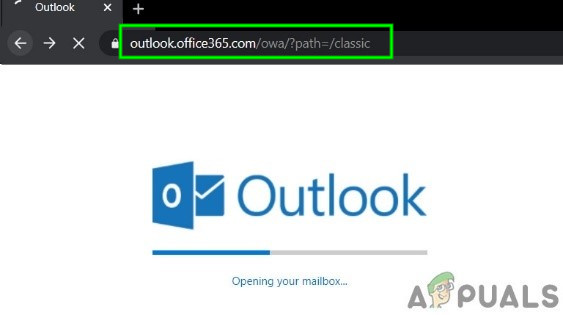
Old Outlook Web App Interface - Now open the message with the attachments. Check if you can download these attachments.
4. Use Light Version of Outlook Web App
Microsoft developed a light version of Outlook Web App for older web browsers, low-bandwidth connections, and accessibility needs. If you cannot download attachments in the standard Outlook Web App, then using the Light Version may solve the problem.
- Click Settings (gear on the upper right corner) and then click on Mail
- Then click on General and then click on Checkmark on “Use the Light version of Outlook Web App”.
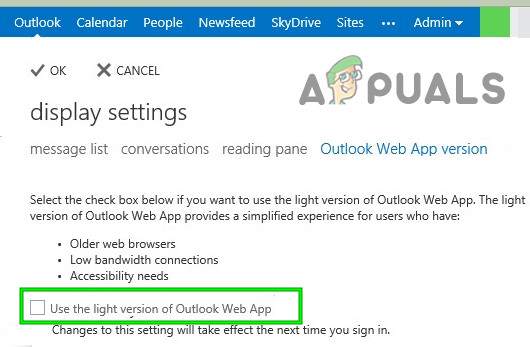
Use the Light version of Outlook Web App - Now sign out of the account and then sign back to enter the OWA light version.
- Now open the message with the attachments and try to download any of the attachments.
Alternatively, you can visit Outlook Web App Light Version Page to check if you can download the attachments now.
5. Tweaks with File Extensions
To safeguard users Outlook Web App by default blocks following file name extensions as attachments
.vsmacros, .msh2xml, .msh1xml, .ps2xml, .ps1xml, .mshxml, .gadget, .mhtml, .psc2, .psc1, .msh2,.msh1, .aspx, .xml, .wsh, .wsf, .wsc, .vsw, .vst, .vss, .vbs, .vbe, .url, .tmp, .shs, .shb, .sct,.scr, .scf, .reg, .pst, .ps2, .ps1, .prg, .prf, .plg, .pif, .pcd, .ops, .mst, .msp, .msi, .msh,.msc, .mht, .mdz, .mdw, .mdt, .mde, .mdb, .mda, .maw, .mav, .mau, .mat, .mas, .mar, .maq, .mam,.mag, .maf, .mad, .lnk, .ksh, .jse, .its, .isp, .ins, .inf, .htc, .hta, .hlp, .fxp, .exe, .der,.csh, .crt, .cpl, .com, .cmd, .chm, .cer, .bat, .bas, .asx, .asp, .app, .adp, .ade, .ws, .vb, .js
If you are trying to download any of these filename extensions, then Outlook Web App would not let you download these attachments in its default configuration.
If Outlook Web App is deployed locally then Changing the Outlook Web App mailbox policy to include and exclude the file types that you want to add (Contact Your Organization’s IT Administrator). But be aware that by changing the Outlook Web App mailbox policy to include file types that are blocked by default, you may make your system more vulnerable to security threats.
There are workarounds to download these attachments.
- You can ask the sender to change the extension name to the allowed ones and once you have downloaded the file then change its extension to the original one.
- You can ask the sender to zip the attachments and once downloaded unzip the attachments.
- But if you cannot ask the sender then you should forward these attachments to another email account where there are no such restrictions and download attachments through that account.
6. Use In-Private Browsing
Outlook Web App cannot download attachments due to issues with the old data of the user, login credentials or cookies stored on the system. Browsers have built-in functionality like in-private browsing or incognito mode to use the browser without using any of this data. So, using in-private browsing may solve the problem.
- Use In-Private Browsing/Incognito Mode.
- Open Outlook Web App and then the message with the attachments.
Now try to download any of the attachments to see if you can download it successfully. If you can successfully download the attachments then clear cache and then use OWA in normal mode.
7. Use A Different Browser
If Outlook Web App cannot download attachments with a particular browser then it may not be Outlook Web Access issue but there could be a problem with that particular browser. Google Chrome is known to have issues with Outlook Web App, so, using another browser to access Outlook Web App may let you download the attachments. Preferably use Internet Explorer or Microsoft Edge.
- Launch the other browser (Internet Explorer or Microsoft Edge are recommended).
- Open the Outlook Web App and then the message with the attachments.
Now see if you can download the attachments.
8. Add the Sender to Whitelist
Outlook web app has built-in functionality to block content from suspicious-looking senders and if you are trying to download an attachment from a user who is marked suspicious by Outlook, then you cannot download attachments sent by that user. Adding that user to whitelist may solve the problem (Warning: Be careful when adding a user to whitelist who is marked suspicious by Outlook as this makes your system more vulnerable to threats).
- Open the Outlook Web App
- Click on Gear Icon
- Select Options
- Click on Filters and reporting
- Scroll down and select Show attachments, pictures, and links for senders with good reputations (under Block content from unknown senders).

Add Sender to Whitelist - Save the changes
- Open Outlook Web App and then open the message with attachments.
Now try to download attachments to see if you can download these attachments successfully.
9. Disable Browser’s Add-ons
Modern web browsers support 3rd-party add-ons/extensions to add new features & functionality to it. Incompatible add-ons/extensions may break the functionality of Outlook Web App and can cause Outlook Web App cannot download attachments. AdBlock is a known add-on which has compatibility issues with Outlook Web App. In that case, removing the web browser’s incompatible add-ons may solve the problem. To remove your Browser specific add-ons, follow the instructions specific to your browser, for illustration purposes we will use Chrome.
- On your computer, open Chrome.
- Near the top right corner, click on three dots (Hamburger Menu)than in the displayed menu click on More tools and then in the sub-menu displayed click on Extensions.
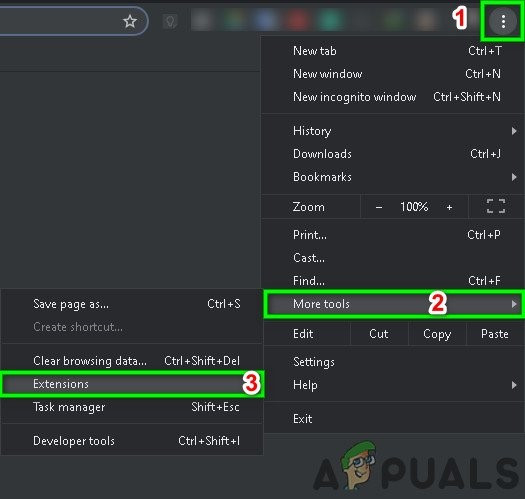
Open Chrome Extensions Menu - Go to the extension you want to remove, and at the bottom of the box, click Remove.
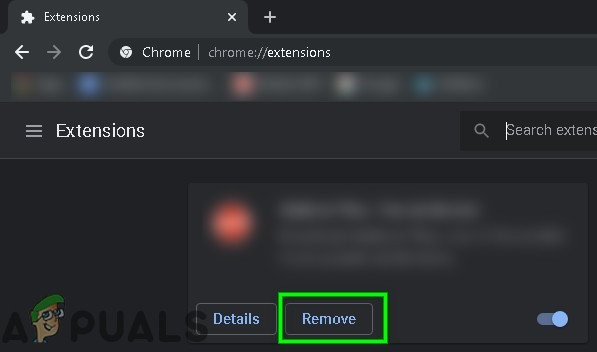
Click Remove Under the Extension Name - Confirm by clicking Remove.

Confirm to Remove the Extension
You should follow steps related to your browser if you are using a different one than Chrome.
After removing the incompatible add-ons/ extensions, check if you can download attachments.
10. Disable Antivirus and Firewall
Antivirus and Firewall help protect your system from threats but sometimes they are known to create hurdles in the legitimate operation of genuine software. That can be the reason for Outlook Web App cannot download attachments, in that case, disabling Anti-virus and firewall may solve the problem.
- Disable Anti-Virus.
- Disable Firewall.
- Now access the Outlook Web App.
Please be warned that when you disable Anti-Virus/Firewall, your system becomes more vulnerable to external threats.
Now try to download the attachments to see if you can download attachments successfully. Afterwards, do not forget to enable Anti-Virus and Firewall. If you can download the attachments then make exceptions in the Anti-Virus and Firewall to allow Outlook Web App to communicate through.
11. Switch to Another Network
ISPs deploy different protocols and technologies to keep things under control and check, and this deployment may have caused the problem under discussion. Using another Network may solve the problem.
- Connect to another network. You can use your mobile hotspot.
- Now access the Outlook Web App and then open the message with attachments.
Now try to download the attachments to see if you can download them successfully. If you cannot use other networks or mobile hotspots, you may use a VPN (but the use of VPN with Outlook Web App is not recommended) to check if the problem is network-related or not.
12. Disable Chrome’s Safe Browsing Feature
Chrome has a built-in feature that blocks certain websites and if it has wrongly put Outlook Web App in that category then Outlook Web App cannot download attachments. Disabling that settings may solve the problem
- Open Google Chrome
- In the search bar type
chrome://settings/
- Then click Sync and Google services
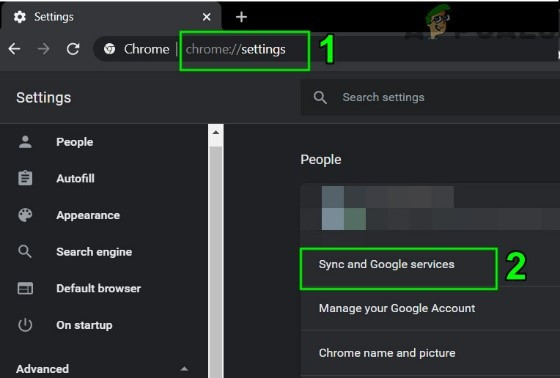
Click Sync and Google services in Chrome Settings - Locate Safe Browsing (Protects from dangerous sites)
- Toggle it off

Toggle Off Safe Browsing in Chrome
Now access the Outlook Web App and try to download attachments to see if you can download them successfully.
13. Reset Chrome to Factory Defaults
Wrong browser configuration can cause “Outlook Web App cannot download attachments”. This error could be because of the Google Chrome flag configuration or something similar. In that case, resetting Google Chrome to its factory defaults may solve the problem. But keep in mind that this will delete all the user data stored in Chrome.
- Launch Google Chrome.
- On the top right corner, click the Hamburger Menu (3-dots).
- From the list, select Settings.

Open Settings in Chrome - Scroll to the bottom and click Advanced.
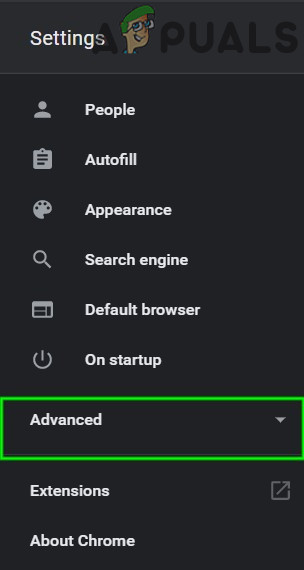
Click Advanced in Chrome Settings - Then, once again, scroll to the bottom until you locate Reset and clean up.

Click Reset and clean up in Chrome Advanced Settings - Click the Reset settings to their original defaults
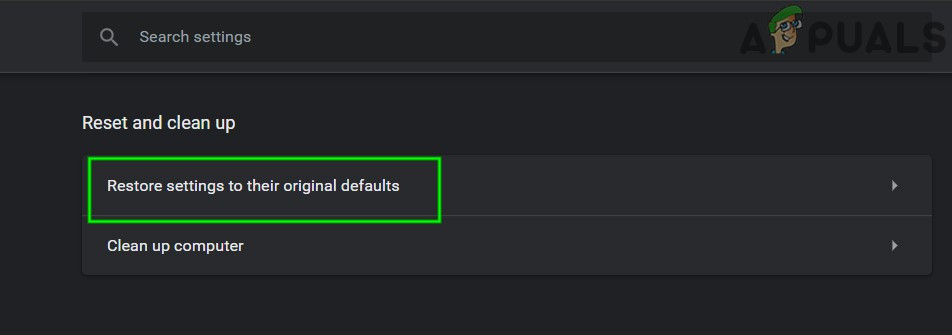
Click Reset Settings to their original defaults - Then click Reset Settings.

Confirm Reset Settings - Wait for it to complete. Google Chrome will relaunch.
- Open Outlook Web App and then open the message with attachments.
Now try to download the attachments to see if you can download these attachments successfully.
14. Change SSL Download Preference in Registry
Sometimes your browsers especially Internet Explorer can download files over HTTPS/SSL. In that case, adding an exception in the registry may solve the problem.
Warning: Making changes in Registry needs expertise and extreme caution. We suggest you do exactly as instructed below because any wrongdoings may corrupt the entire OS.
- Press Windows button and type “Registry Editor” and in the resulting list, Right-click on Registry Editor and then click on “Run as Administrator”

Open Registry Editor as Administrator - Locate the following registry key (for adding the setting to the current user):
HKEY_CURRENT_USER\SOFTWARE\Microsoft\Windows\CurrentVersion\Internet Settings
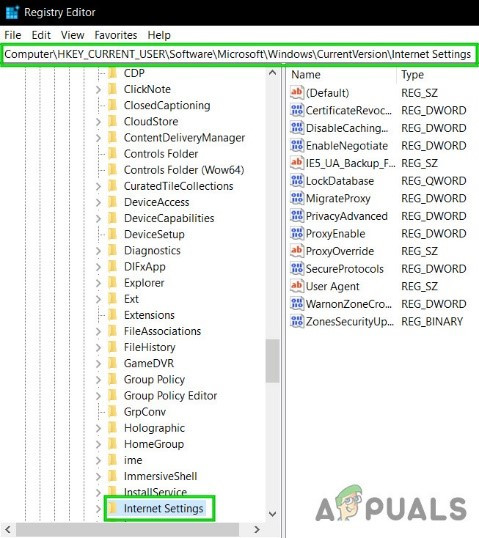
Open Relevant Registry Entry - On the Edit menu, click New and then click on Dword (32-bit) value.
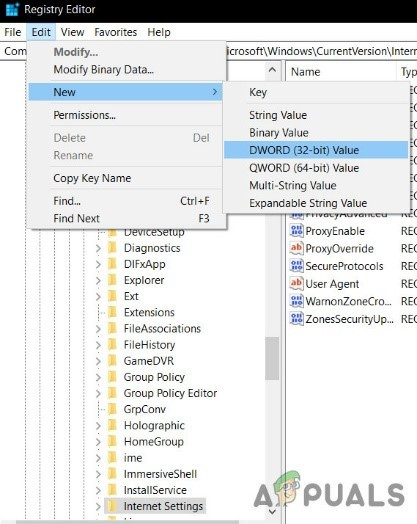
Add Dword (32-bit) new value - Now add the following value:
"BypassSSLNoCacheCheck"=Dword:00000001
- Exit Registry Editor.
- If you want to add settings to the computer, locate the following registry key:
HKEY_LOCAL_MACHINE\SOFTWARE\Microsoft\Windows\CurrentVersion\Internet Settings
and repeat step 3 and exit the registry and restart the system.
Hopefully, you can download the attachments in Outlook Web App. Keep visiting us for new tips and tricks.




